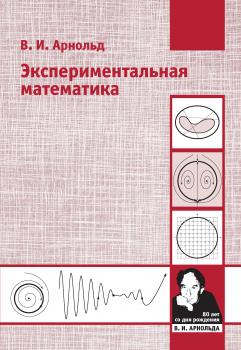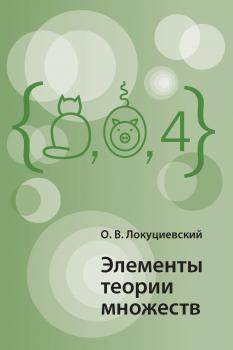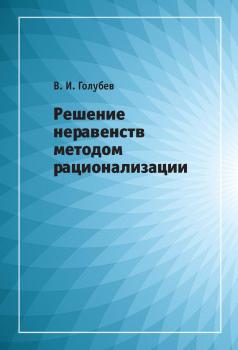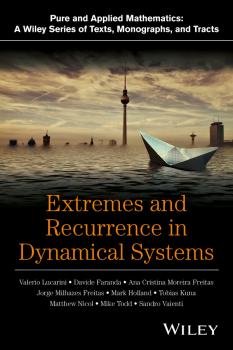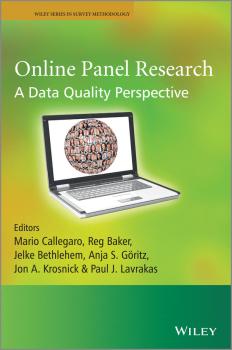ТОП просматриваемых книг сайта:
Математика
Различные книги в жанре Математика, доступные для чтения и скачиванияАннотация
В тайну пирамид. Процесс образования заряда пирамид. Механизм действия. Классификация. Расчёты для конструирования пирамид по заданным параметрам. Природа магнетизма. Энергетика. Особенности различных пирамид. Опыты. Электромагнитные волны людей, животных, птиц, насекомых, растений.
Аннотация
В первой части книги выдающийся математик В. И. Арнольд в полемической форме рассуждает о соотношении чистой и прикладной математики. Вторая часть книги содержит записи курсов лекций, прочитанных автором в Дубне в 2005 году, на летней школе «Современная математика». В ней рассказывается о нескольких новых направлениях математических исследований, основанных на численных экспериментах.
Аннотация
Эта брошюра представляет собой записки курса по элементарной теории множеств, который профессор МГУ О. В. Локуциевский читал в 60-е годы прошедшего века ученикам восьмого (в современной нумерации – девятого) класса московской математической школы номер 2. Олег Вячеславович был выдающимся математиком и замечательным человеком. Его творчество было связано с двумя крупными математическими центрами – механико-математическим факультетом Московского университета и Отделением прикладной математики (ныне Институтом прикладной математики им. М. В. Келдыша). Вторая школа – выдающаяся физико-математическая школа того времени – воспитала в своих стенах множество блестящих ученых. Для старшеклассников, интересующихся математикой, и учителей, работающих в математических школах.
Аннотация
Первая часть книги «История математики» посвящена периоду до конца XVII века. В ней сначала рассказывается об истории математики Древнего Египта, Вавилона, Древней Греции, Китая, Индии и арабских стран. Затем действие переносится в Западную Европу, и за кратким обзором Средних веков и Возрождения следует подробный рассказ о математике XVII века. Для школьников, студентов и преподавателей – математиков и физиков, а также для всех интересующихся историей науки.
Аннотация
В книге рассматриваются неравенства повышенной сложности. Даны их краткие и подробные решения методом рационализации (методом замены множителей). Приведены неравенства для самостоятельной работы, которые можно использовать для занятий в классе, составления контрольных работ и домашних заданий. Сформулированы рекомендации по составлению сложных неравенств для подготовки к ЕГЭ, олимпиадам и вступительным экзаменам. Книга рассчитана на учителей и учащихся общеобразовательных школ, студентов педагогических вузов, абитуриентов.
Аннотация
Written by a team of international experts, Extremes and Recurrence in Dynamical Systems presents a unique point of view on the mathematical theory of extremes and on its applications in the natural and social sciences. Featuring an interdisciplinary approach to new concepts in pure and applied mathematical research, the book skillfully combines the areas of statistical mechanics, probability theory, measure theory, dynamical systems, statistical inference, geophysics, and software application. Emphasizing the statistical mechanical point of view, the book introduces robust theoretical embedding for the application of extreme value theory in dynamical systems. Extremes and Recurrence in Dynamical Systems also features: • A careful examination of how a dynamical system can serve as a generator of stochastic processes • Discussions on the applications of statistical inference in the theoretical and heuristic use of extremes • Several examples of analysis of extremes in a physical and geophysical context • A final summary of the main results presented along with a guide to future research projects • An appendix with software in Matlab® programming language to help readers to develop further understanding of the presented concepts Extremes and Recurrence in Dynamical Systems is ideal for academics and practitioners in pure and applied mathematics, probability theory, statistics, chaos, theoretical and applied dynamical systems, statistical mechanics, geophysical fluid dynamics, geosciences and complexity science. VALERIO LUCARINI, PhD, is Professor of Theoretical Meteorology at the University of Hamburg, Germany and Professor of Statistical Mechanics at the University of Reading, UK. DAVIDE FARANDA, PhD, is Researcher at the Laboratoire des science du climat et de l’environnement, IPSL, CEA Saclay, Université Paris-Saclay, Gif-sur-Yvette, France. ANA CRISTINA GOMES MONTEIRO MOREIRA DE FREITAS, PhD, is Assistant Professor in the Faculty of Economics at the University of Porto, Portugal. JORGE MIGUEL MILHAZES DE FREITAS, PhD, is Assistant Professor in the Department of Mathematics of the Faculty of Sciences at the University of Porto, Portugal. MARK HOLLAND, PhD, is Senior Lecturer in Applied Mathematics in the College of Engineering, Mathematics and Physical Sciences at the University of Exeter, UK. TOBIAS KUNA, PhD, is Associate Professor in the Department of Mathematics and Statistics at the University of Reading, UK. MATTHEW NICOL, PhD, is Professor of Mathematics at the University of Houston, USA. MIKE TODD, PhD, is Lecturer in the School of Mathematics and Statistics at the University of St. Andrews, Scotland. SANDRO VAIENTI, PhD, is Professor of Mathematics at the University of Toulon and Researcher at the Centre de Physique Théorique, France.
Аннотация
Provides new insights into the accuracy and value of online panels for completing surveys Over the last decade, there has been a major global shift in survey and market research towards data collection, using samples selected from online panels. Yet despite their widespread use, remarkably little is known about the quality of the resulting data. This edited volume is one of the first attempts to carefully examine the quality of the survey data being generated by online samples. It describes some of the best empirically-based research on what has become a very important yet controversial method of collecting data. Online Panel Research presents 19 chapters of previously unpublished work addressing a wide range of topics, including coverage bias, nonresponse, measurement error, adjustment techniques, the relationship between nonresponse and measurement error, impact of smartphone adoption on data collection, Internet rating panels, and operational issues. The datasets used to prepare the analyses reported in the chapters are available on the accompanying website: www.wiley.com/go/online_panel Covers controversial topics such as professional respondents, speeders, and respondent validation. Addresses cutting-edge topics such as the challenge of smartphone survey completion, software to manage online panels, and Internet and mobile ratings panels. Discusses and provides examples of comparison studies between online panels and other surveys or benchmarks. Describes adjustment techniques to improve sample representativeness. Addresses coverage, nonresponse, attrition, and the relationship between nonresponse and measurement error with examples using data from the United States and Europe. Addresses practical questions such as motivations for joining an online panel and best practices for managing communications with panelists. Presents a meta-analysis of determinants of response quantity. Features contributions from 50 international authors with a wide variety of backgrounds and expertise. This book will be an invaluable resource for opinion and market researchers, academic researchers relying on web-based data collection, governmental researchers, statisticians, psychologists, sociologists, and other research practitioners.
Аннотация
This book focuses on the modelling of contemporary health and social problems, especially those considered a major burden to communities, governments and taxpayers, such as smoking, alcoholism, drug use, and heart disease. Based on a series of papers presented at a recent conference hosted by the Leverhulme-funded Tipping Points project at the University of Durham, this book illustrates a broad range of modelling approaches. Such a diverse collection demonstrates that an interdisciplinary approach is essential to modelling tipping points in health and social problems, and the assessment of associated risk and resilience.
Аннотация
Presents a comprehensive treatment of issues related to the inception, design, implementation and reporting of large-scale education assessments. In recent years many countries have decided to become involved in international educational assessments to allow them to ascertain the strengths and weaknesses of their student populations. Assessments such as the OECD's Programme for International Student Assessment (PISA), the IEA's Trends in Mathematics and Science Study (TIMSS) and Progress in International Reading Literacy (PIRLS) have provided opportunities for comparison between students of different countries on a common international scale. This book is designed to give researchers, policy makers and practitioners a well-grounded knowledge in the design, implementation, analysis and reporting of international assessments. Readers will be able to gain a more detailed insight into the scientific principles employed in such studies allowing them to make better use of the results. The book will also give readers an understanding of the resources needed to undertake and improve the design of educational assessments in their own countries and regions. Implementation of Large-Scale Education Assessments: Brings together the editors’ extensive experience in creating, designing, implementing, analysing and reporting results on a wide range of assessments. Emphasizes methods for implementing international studies of student achievement and obtaining highquality data from cognitive tests and contextual questionnaires. Discusses the methods of sampling, weighting, and variance estimation that are commonly encountered in international large-scale assessments. Provides direction and stimulus for improving global educational assessment and student learning Is written by experts in the field, with an international perspective. Survey researchers, market researchers and practitioners engaged in comparative projects will all benefit from the unparalleled breadth of knowledge and experience in large-scale educational assessments gathered in this one volume.
Аннотация
A one-stop guide for public health students and practitioners learning the applications of classical regression models in epidemiology This book is written for public health professionals and students interested in applying regression models in the field of epidemiology. The academic material is usually covered in public health courses including (i) Applied Regression Analysis, (ii) Advanced Epidemiology, and (iii) Statistical Computing. The book is composed of 13 chapters, including an introduction chapter that covers basic concepts of statistics and probability. Among the topics covered are linear regression model, polynomial regression model, weighted least squares, methods for selecting the best regression equation, and generalized linear models and their applications to different epidemiological study designs. An example is provided in each chapter that applies the theoretical aspects presented in that chapter. In addition, exercises are included and the final chapter is devoted to the solutions of these academic exercises with answers in all of the major statistical software packages, including STATA, SAS, SPSS, and R. It is assumed that readers of this book have a basic course in biostatistics, epidemiology, and introductory calculus. The book will be of interest to anyone looking to understand the statistical fundamentals to support quantitative research in public health. In addition, this book: • Is based on the authors’ course notes from 20 years teaching regression modeling in public health courses • Provides exercises at the end of each chapter • Contains a solutions chapter with answers in STATA, SAS, SPSS, and R • Provides real-world public health applications of the theoretical aspects contained in the chapters Applications of Regression Models in Epidemiology is a reference for graduate students in public health and public health practitioners. ERICK SUÁREZ is a Professor of the Department of Biostatistics and Epidemiology at the University of Puerto Rico School of Public Health. He received a Ph.D. degree in Medical Statistics from the London School of Hygiene and Tropical Medicine. He has 29 years of experience teaching biostatistics. CYNTHIA M. PÉREZ is a Professor of the Department of Biostatistics and Epidemiology at the University of Puerto Rico School of Public Health. She received an M.S. degree in Statistics and a Ph.D. degree in Epidemiology from Purdue University. She has 22 years of experience teaching epidemiology and biostatistics. ROBERTO RIVERA is an Associate Professor at the College of Business at the University of Puerto Rico at Mayaguez. He received a Ph.D. degree in Statistics from the University of California in Santa Barbara. He has more than five years of experience teaching statistics courses at the undergraduate and graduate levels. MELISSA N. MARTÍNEZ is an Account Supervisor at Havas Media International. She holds an MPH in Biostatistics from the University of Puerto Rico and an MSBA from the National University in San Diego, California. For the past seven years, she has been performing analyses for the biomedical research and media advertising fields.


